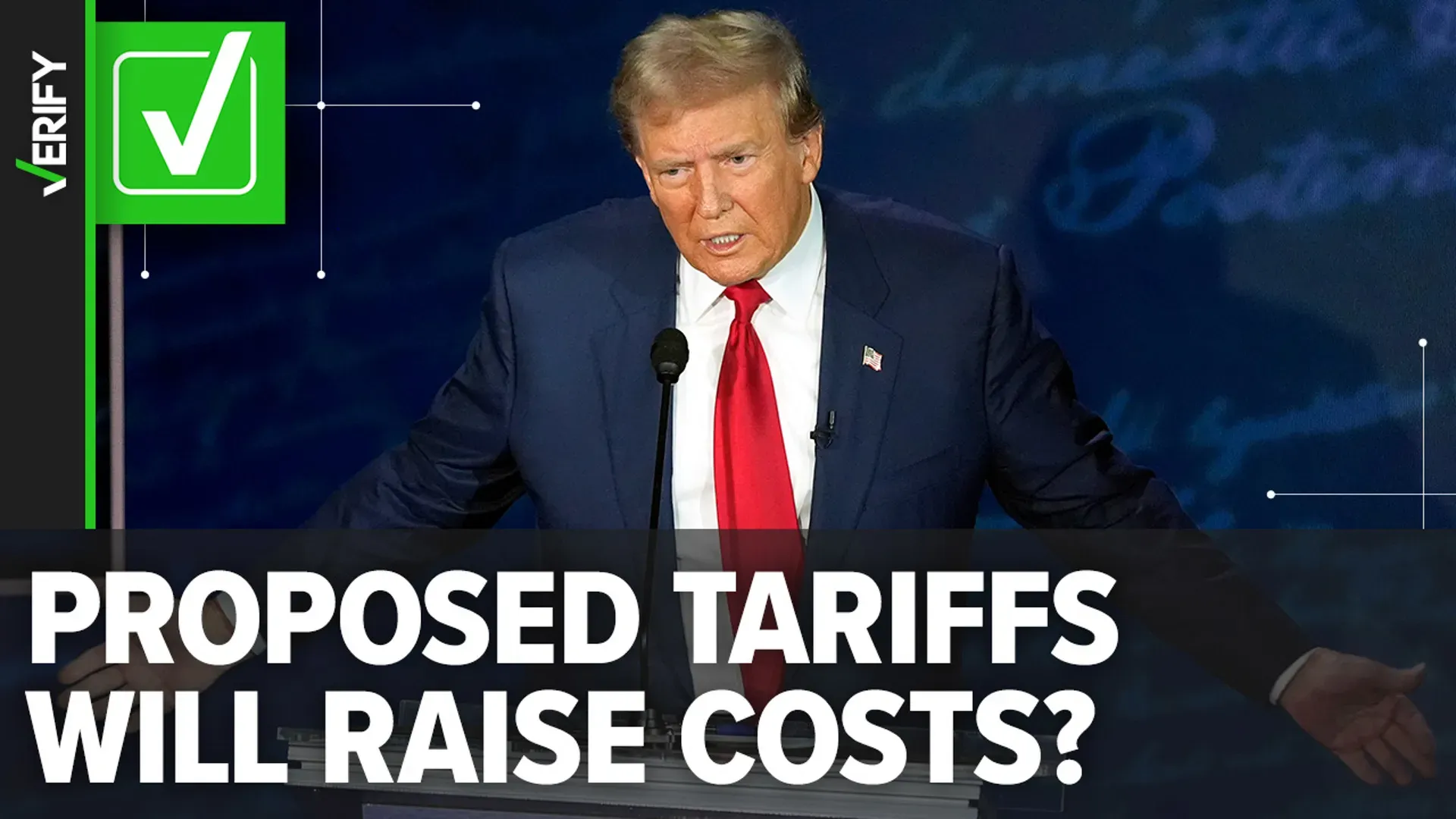Trump Tariffs Calculation: Unearthing the Dubious Method

The calculation of Trump tariffs has raised eyebrows among economists and trade analysts alike. Promised as “reciprocal” tariffs aimed at balancing trade disparities, the methodology behind these tariffs appears fundamentally flawed. Instead of a meticulous analysis of each nation’s tariffs and trade practices, the Trump administration employed a simplified formula: dividing the trade deficit by imports to the United States and multiplying by a factor of 0.5. This approach sparked concerns regarding the tariff impact on the economy and its implications for global trade dynamics. With countries like China reporting significant trade surpluses, the ramifications of these tariffs could reverberate across international markets and exacerbate existing trade tensions, warranting a closer look at trade deficit analysis and reciprocal tariffs.
Exploring the intricacies surrounding Trump’s import duties sheds light on his administration’s controversial economic strategies. Dubbed “reciprocal” import tariffs, these measures were designed to counterbalance trade agreements but lacked the precision one might expect from such significant financial decisions. The method employed was a basic equation that contrasted sharply with the complexities of international trade relations. As large nations with hefty trade balances faced these tariffs, it became imperative to understand their far-reaching consequences on both national and global levels. Given the potential disruption to established trade patterns, a deeper evaluation of the methods and implications of these levies is essential in assessing their long-term economic fallout.
Understanding Trump Tariffs Calculation
The methodology behind President Trump’s tariffs has been a topic of intense scrutiny and debate. The administration’s approach to calculating tariffs, branded as ‘reciprocal’, has raised eyebrows primarily because it oversimplifies the complexities of international trade. The calculations, rather than assessing actual tariff rates applied by other nations, primarily rely on a formula where the trade deficit is divided by U.S. imports from the trading partner, effectively reducing intricate tariff structures to a singular numeric representation.
This model, while seemingly straightforward, misses critical elements of global trade dynamics, such as varied tariffs across different goods and services. As pointed out by analysts, this approach primarily targets countries with significant trade surpluses with the U.S., raising concerns about retaliatory measures that could follow. The reduction of tariff assessment to a simple arithmetic calculation presents inherent flaws, as it neglects a comprehensive analysis of actual trade barriers and overall economic relations.
The Impact of Tariffs on the Economy
The broad implications of Trump’s tariff calculations extend beyond mere numbers; they highlight a shifting dynamic in economic relations among trading nations. By focusing on countries with large trade surpluses, these tariffs can disproportionately affect nations that provide essential goods, affecting supply chains significantly. This impact raises critical questions about the potential long-term economic consequences—such as job losses in key sectors and increases in consumer prices—as companies grapple with heightened import costs.
Moreover, the economic ramifications are not solely confined to the U.S.; other countries affected by these tariffs may respond with reciprocal measures, potentially escalating into trade wars. These moves can damage the smooth operation of global supply chains, forcing companies to reevaluate their strategies amid rising costs and shifting market dynamics. Analysts emphasize that without proper consideration of these repercussions, policymakers risk creating instability in both the U.S. economy and global markets.
Exploring Reciprocal Tariffs and Trade Deficit Analysis
The notion of reciprocal tariffs as proposed by the Trump administration hinges on a simplistic view that overlooks the intricacies of global trade. By using the trade deficit as a central figure in tariff calculation, the administration fails to adequately consider other critical factors such as the real market value of goods imported and exported. This method risks unfairly penalizing nations that, while having trade surpluses, may not necessarily engage in unfair trading practices.
In essence, a detailed trade deficit analysis allows for deeper insights into the multifaceted nature of international economic interactions. The focus on tariffs as punitive measures based on surplus statistics could inadvertently trigger economic backlash. Countries that find their products heavily taxed might resort to retaliatory tariffs, further complicating trade relations, creating a cycle of trade disputes, and potentially augmenting the overall trade deficit they initially aimed to rectify.
China Trade Surplus and Tariff Policies
China’s significant trade surplus with the United States has become a focal point in tariff discussions, largely framing the narrative of America’s trade policy. The Trump administration’s tariffs were framed as a necessary countermeasure to what was deemed an unfair trading practice, yet the methodology of determining which tariffs to impose lacks transparency. By comparing deficit figures and exports without a nuanced understanding of the context, the tariffs could inadvertently harm sectors reliant on Chinese goods.
The complexities arise when considering the export profiles of various Chinese products. Many of these goods are integral to U.S. manufacturing processes, meaning that tariffs could lead to higher production costs. This scenario poses a dilemma where the intention to protect American industry through tariffs might backfire, resulting in increased consumer prices and potential job losses in sectors affected by retaliatory tariffs from China or other nations.
Global Trade Implications of Tariff Changes
The global trade landscape is already feeling the ripple effects of the tariffs announced by the Trump administration. As countries react to these policies, the interconnectedness of global markets becomes evident, highlighting how local tariff adjustments can lead to widespread international ramifications. Countries with strong trade ties to the U.S. are forced to reassess their own tariff policies in response, setting off a chain reaction that can destabilize established trade agreements.
These alterations could significantly influence multinational corporations operating in various markets, which find themselves navigating an increasingly complex legislative environment. Increased costs imposed by tariffs may lead companies to realign their supply chains, innovate to reduce cost, or even withdraw from certain markets entirely, thereby reshaping trade relations and impacting global economic growth.
The Role of Value-Added Taxes in Tariff Calculations
An often overlooked aspect of tariff calculations is the role of value-added taxes (VAT) imposed by countries on imported goods. In his tariff calculations, Trump attempted to account for these non-tariff barriers, suggesting a holistic approach to trade imbalances. However, his method of only partially integrating these complexities raises questions about the effectiveness and fairness of such tariffs. Not fully factoring in VAT could lead to an inaccurate portrayal of the true cost of importing goods, affecting pricing strategies for American consumers.
The ramifications of ignoring VAT intricacies could extend beyond mere economic metrics. Countries affected by U.S. tariffs may respond by revising their own tax structures, leading to a cascading effect on global pricing policies and further complicating trade relations. Businesses that rely on imports bear the brunt of these shifts, as they must navigate the dual pressures of fluctuating tariffs and changing tax regulations, ultimately impacting their competitiveness in both domestic and international markets.
Understanding the Complexity of Tariff Implementation
Implementing tariffs under the guise of reciprocal measures introduces a layer of complexity that is often underestimated. The actual execution of these policies, which technically targets nations based on simplistic calculations of trade deficits, does not fully address the multifaceted nature of tariffs and global trade. For many countries, tariffs are not merely a financial instrument but a means to negotiate and maintain strategic economic partnerships.
Without considering the broader implications of such policies, there is a risk of escalating tensions among trading partners. The simplistic approach may embolden nations to either retaliate or adjust their trade strategies, leading to an environment where cooperation gives way to conflict. This shift could fundamentally alter the established economic relationship dynamics, underscoring the need for a more nuanced understanding of trade policy.
Analyzing the Future of Tariff Relations
As the implications of Trump’s tariffs unfold, it raises critical questions about the future of U.S. trade policies. Will the focus on reciprocal tariffs lead to a more balanced trade relationship, or will it exacerbate existing tensions in the international arena? Analysts posit that without a cooperative approach to global trade, the risks of declining trade relations could become a reality. This necessity for dialogue and consensus is paramount, especially for maintaining economic stability.
With mounting pressures to reassess tariff policies, observers urge that the U.S. administration must understand the long-lasting effects of these tariffs on both domestic and international economics. Failure to establish constructive trade relations may set precursors for continual economic conflict, altering the global economic landscape in profound ways. Looking ahead, how the U.S. navigates these complex relationships will likely determine its international trade standing and overall economic health.
The Potential for Retaliatory Measures in Global Trade
The announcement of new tariffs often triggers fears of retaliatory measures from affected countries, ultimately complicating international trade even further. Nations with substantial surpluses, such as China, may feel pressured to counteract U.S. tariffs with their own trade penalties. Such a scenario is typically seen in trade disputes and raises concerns over the potential for escalations that could spiral into full-blown trade wars.
This cycle of reciprocation can have detrimental effects on the global economy, particularly for smaller nations that may not have the resources to absorb the impacts of rising tariffs. Multinational corporations could find themselves squeezed between increasing import costs and retaliatory actions from foreign markets. Therefore, it is critical for policymakers to tread carefully, considering the long-term consequences of tariffs on both their nation’s economy and the wider global market.
Frequently Asked Questions
How did Trump calculate reciprocal tariffs and what does it imply?
President Trump’s calculation of reciprocal tariffs was based on a formula where the trade deficit with a country was divided by that country’s exports to the U.S. and then multiplied by 0.5. This simplistic approach suggests that the tariffs were not truly reciprocal but rather targeted countries with significant trade surpluses.
What were the impacts of Trump’s tariffs calculation on the trade deficit analysis?
The impact of Trump’s tariffs calculation on trade deficit analysis was significant, as it highlighted disproportionate targeting of countries with large surpluses. For instance, by focusing on the trade deficit figures, the administration ignored comprehensive tariff matching, which could distort trade relations and economic interactions.
What were the global trade implications of Trump’s tariffs on China’s trade surplus?
The global trade implications of Trump’s tariffs particularly affected China’s trade surplus, which amounted to 67% of its exports to the U.S. This aggressive policy aimed at reducing the U.S. trade deficit could lead to retaliatory measures from China, potentially disrupting global supply chains.
How did Trump’s tariffs affect the overall tariff impact on the economy?
Trump’s tariffs were designed to force other nations to alter their trade practices, but the simplistic calculation undermined the actual tariff impact on the economy. Observers feared it would harm U.S. multinational corporations relying on foreign goods, squeezing profit margins and possibly stunting economic growth.
What methodology did the Trump administration employ for calculating tariffs?
The Trump administration utilized a straightforward calculation method for tariffs, dividing the trade deficit by the total exports from the country to the U.S., without considering other complex tariff systems or barriers. This method, while simple, raised concerns about its effectiveness and fairness in truly assessing reciprocal tariffs.
Why did Trump’s tariffs face criticism regarding their reciprocal nature?
Trump’s tariffs faced criticism because the calculation method used did not effectively match tariffs dollar for dollar as promised. Critics pointed out that the focus was on surplus targeting rather than a genuine reciprocal approach, raising questions about the fairness and accuracy of the tariffs imposed.
| Key Point | Details |
|---|---|
| Trump’s Tariff Calculations | The calculation method was criticized for being overly simplistic and not truly reciprocal. |
| Method Used | The Trump administration calculated tariffs by dividing the trade deficit by the exports to the U.S. and multiplying by 1/2. |
| Trade Deficit Example | In 2024, the U.S. trade deficit with China was $295.4 billion with imports valued at $439.9 billion. |
| Mischaracterization of Tariffs | The imposed tariffs were labeled as ‘reciprocal’, but they specifically targeted countries with large trade surpluses. |
| Implications | Severe impact predicted on U.S. companies reliant on affected nations, potentially harming profit margins. |
Summary
Trump tariffs calculation, while intended to create a sense of fairness through reciprocity, reveals a simplistic approach that poses significant risks to international trade relationships. By calculating tariffs based solely on trade deficits and exports, the Trump administration has not only misled the narrative of fairness but also placed undue strain on global supply chains. As these tariffs roll out, the ramifications for U.S. businesses and their international partners could be severe, affecting overall market stability and profitability.




